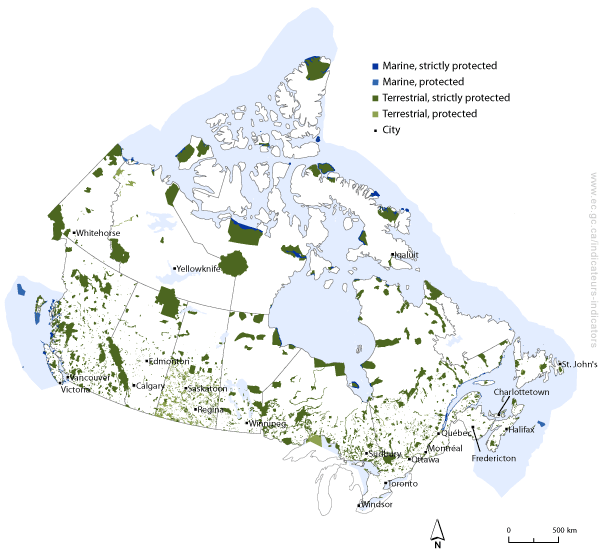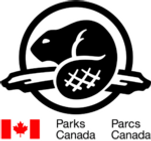Conservation Biology in the Boreal
HOW DOES NEWFOUNDLAND and LABRADOR COMPARE??

Canada's Terrestrial Protected Areas
Canada is one of the few countries that have an abundance of intact natural resources containing both beautiful sceneries and diverse wildlife as well, they are one of the first countries to establish terrestrial protected areas. Today terrestrial protected areas in Canada have increased to about 100 million hectares (9.9% of total land area) of habitats (9). Protected areas in Canada are created to represent parts of the Canadian landscape or to conserve endangered wildlife species and ecologically sensitive areas or habitats.

Who's Protecting Canada's Areas?
Environment Canada is a diverse government organization that is in charge of implementing the Government of Canada’s environmental agenda. They are involved in protecting the environment, conserving the countries natural heritage, and providing weather and meteorological information to all of Canada. They also establish and manage 54 national wildlife areas and 92 migratory bird sanctuaries across Canada (7).
Parks Canada is an agency of the government of Canada who’s mandate states: "we protect and present nationally significant examples of Canada's natural and cultural heritage and foster public understanding, appreciation and enjoyment in ways that ensure their ecological and commemorative integrity for present and future generations." Parks Canada manages 44 national parks, 157 national heritage sites, and 4 national marine conservation areas across Canada (23).
The Federal Government has appointed 2 federal departments, Environment Canada and Parks Canada Agency, to manage and protect these areas. However, there are many other non-government organizations (NGOS) that play a big role in protecting and conserving our environment. Some of these include, Sierra Club Canada, the Canadian Environmental Netork (RCEN), and the Canadian Parks and Wilderness Society (CPAWS).
Canada's Protected Areas
Currently, Canada has 9.9% of its land dedicated to terrestrial protected areas, almost as big as Ontario (9)!
However, we aren't doing so well compared to the rest of the world, in fact we only rank 13 out of the 29 participating nations (1).

Canadian Example
Overview:
Banff National Park is Canada’s first national park and the world’s third. It is found just west of Calgary, Alberta and spans 6,641 km^2, consisting of valleys, mountains, glaciers, meadows and rivers. It was first discovered in 1883 by three Canadian Pacific Railway construction workers who came across a cave that contained natural hot springs. This discovery led to the establishment of the park by 1885 in the Rocky Mountains. The park is home to many types of wildlife, including grizzly bears, black bears, coyotes, moose, and many more species (1).


Banff National Park, Alberta
Conservation Management
Since the park is so big, and is highly visited the ecosystem is threatened and therefore all visitors require a permit to enter the park and are available at the entrances. Permits allow records to be kept of who enters the park and keeps track of the total number of visitors. The park has also signed an energy performance contract (EPC) with an energy service company (ESCO) to reduce usage, and improve energy efficiency in the park. Doing this meant that energy and water consumption and greenhouse gas emissions would be reduced. Bison restoration is also underway to re-establish their population within the park (21).
(Biodiversity information system for Europe, n.d)
Banff Wildlife Crossing
Retrieved From:
http://www.fhwa.dot.gov/publications/research/safety/08034/08.cfm
American Bison Located in Banff
Retrieved From:
http://en.wikipedia.org/wiki/File:American_bison_k5680-1.jpg
Map of Canada's Protected Areas
(Environment Canada, 2012)
Source: www.wallpaperstravel.com

